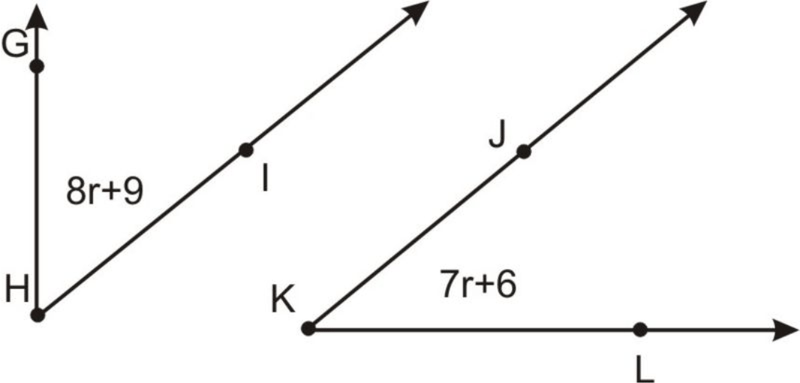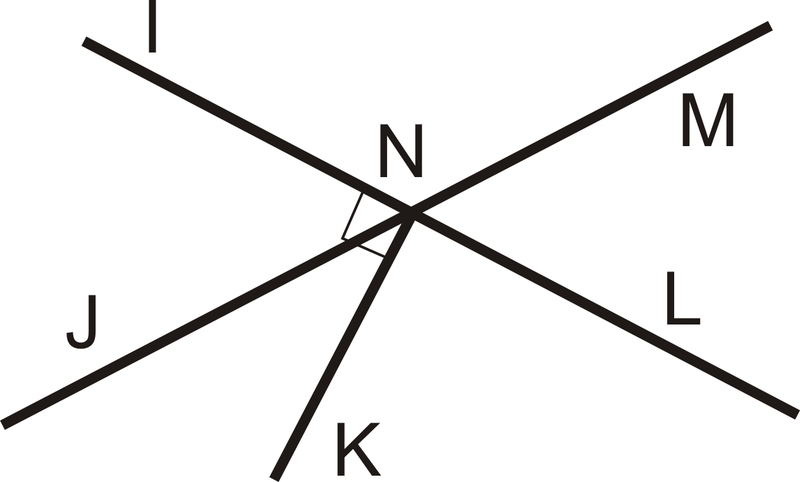1.14: Ángulos complementarios
- Page ID
- 107590
\( \newcommand{\vecs}[1]{\overset { \scriptstyle \rightharpoonup} {\mathbf{#1}} } \)
\( \newcommand{\vecd}[1]{\overset{-\!-\!\rightharpoonup}{\vphantom{a}\smash {#1}}} \)
\( \newcommand{\dsum}{\displaystyle\sum\limits} \)
\( \newcommand{\dint}{\displaystyle\int\limits} \)
\( \newcommand{\dlim}{\displaystyle\lim\limits} \)
\( \newcommand{\id}{\mathrm{id}}\) \( \newcommand{\Span}{\mathrm{span}}\)
( \newcommand{\kernel}{\mathrm{null}\,}\) \( \newcommand{\range}{\mathrm{range}\,}\)
\( \newcommand{\RealPart}{\mathrm{Re}}\) \( \newcommand{\ImaginaryPart}{\mathrm{Im}}\)
\( \newcommand{\Argument}{\mathrm{Arg}}\) \( \newcommand{\norm}[1]{\| #1 \|}\)
\( \newcommand{\inner}[2]{\langle #1, #2 \rangle}\)
\( \newcommand{\Span}{\mathrm{span}}\)
\( \newcommand{\id}{\mathrm{id}}\)
\( \newcommand{\Span}{\mathrm{span}}\)
\( \newcommand{\kernel}{\mathrm{null}\,}\)
\( \newcommand{\range}{\mathrm{range}\,}\)
\( \newcommand{\RealPart}{\mathrm{Re}}\)
\( \newcommand{\ImaginaryPart}{\mathrm{Im}}\)
\( \newcommand{\Argument}{\mathrm{Arg}}\)
\( \newcommand{\norm}[1]{\| #1 \|}\)
\( \newcommand{\inner}[2]{\langle #1, #2 \rangle}\)
\( \newcommand{\Span}{\mathrm{span}}\) \( \newcommand{\AA}{\unicode[.8,0]{x212B}}\)
\( \newcommand{\vectorA}[1]{\vec{#1}} % arrow\)
\( \newcommand{\vectorAt}[1]{\vec{\text{#1}}} % arrow\)
\( \newcommand{\vectorB}[1]{\overset { \scriptstyle \rightharpoonup} {\mathbf{#1}} } \)
\( \newcommand{\vectorC}[1]{\textbf{#1}} \)
\( \newcommand{\vectorD}[1]{\overrightarrow{#1}} \)
\( \newcommand{\vectorDt}[1]{\overrightarrow{\text{#1}}} \)
\( \newcommand{\vectE}[1]{\overset{-\!-\!\rightharpoonup}{\vphantom{a}\smash{\mathbf {#1}}}} \)
\( \newcommand{\vecs}[1]{\overset { \scriptstyle \rightharpoonup} {\mathbf{#1}} } \)
\( \newcommand{\vecd}[1]{\overset{-\!-\!\rightharpoonup}{\vphantom{a}\smash {#1}}} \)
\(\newcommand{\avec}{\mathbf a}\) \(\newcommand{\bvec}{\mathbf b}\) \(\newcommand{\cvec}{\mathbf c}\) \(\newcommand{\dvec}{\mathbf d}\) \(\newcommand{\dtil}{\widetilde{\mathbf d}}\) \(\newcommand{\evec}{\mathbf e}\) \(\newcommand{\fvec}{\mathbf f}\) \(\newcommand{\nvec}{\mathbf n}\) \(\newcommand{\pvec}{\mathbf p}\) \(\newcommand{\qvec}{\mathbf q}\) \(\newcommand{\svec}{\mathbf s}\) \(\newcommand{\tvec}{\mathbf t}\) \(\newcommand{\uvec}{\mathbf u}\) \(\newcommand{\vvec}{\mathbf v}\) \(\newcommand{\wvec}{\mathbf w}\) \(\newcommand{\xvec}{\mathbf x}\) \(\newcommand{\yvec}{\mathbf y}\) \(\newcommand{\zvec}{\mathbf z}\) \(\newcommand{\rvec}{\mathbf r}\) \(\newcommand{\mvec}{\mathbf m}\) \(\newcommand{\zerovec}{\mathbf 0}\) \(\newcommand{\onevec}{\mathbf 1}\) \(\newcommand{\real}{\mathbb R}\) \(\newcommand{\twovec}[2]{\left[\begin{array}{r}#1 \\ #2 \end{array}\right]}\) \(\newcommand{\ctwovec}[2]{\left[\begin{array}{c}#1 \\ #2 \end{array}\right]}\) \(\newcommand{\threevec}[3]{\left[\begin{array}{r}#1 \\ #2 \\ #3 \end{array}\right]}\) \(\newcommand{\cthreevec}[3]{\left[\begin{array}{c}#1 \\ #2 \\ #3 \end{array}\right]}\) \(\newcommand{\fourvec}[4]{\left[\begin{array}{r}#1 \\ #2 \\ #3 \\ #4 \end{array}\right]}\) \(\newcommand{\cfourvec}[4]{\left[\begin{array}{c}#1 \\ #2 \\ #3 \\ #4 \end{array}\right]}\) \(\newcommand{\fivevec}[5]{\left[\begin{array}{r}#1 \\ #2 \\ #3 \\ #4 \\ #5 \\ \end{array}\right]}\) \(\newcommand{\cfivevec}[5]{\left[\begin{array}{c}#1 \\ #2 \\ #3 \\ #4 \\ #5 \\ \end{array}\right]}\) \(\newcommand{\mattwo}[4]{\left[\begin{array}{rr}#1 \amp #2 \\ #3 \amp #4 \\ \end{array}\right]}\) \(\newcommand{\laspan}[1]{\text{Span}\{#1\}}\) \(\newcommand{\bcal}{\cal B}\) \(\newcommand{\ccal}{\cal C}\) \(\newcommand{\scal}{\cal S}\) \(\newcommand{\wcal}{\cal W}\) \(\newcommand{\ecal}{\cal E}\) \(\newcommand{\coords}[2]{\left\{#1\right\}_{#2}}\) \(\newcommand{\gray}[1]{\color{gray}{#1}}\) \(\newcommand{\lgray}[1]{\color{lightgray}{#1}}\) \(\newcommand{\rank}{\operatorname{rank}}\) \(\newcommand{\row}{\text{Row}}\) \(\newcommand{\col}{\text{Col}}\) \(\renewcommand{\row}{\text{Row}}\) \(\newcommand{\nul}{\text{Nul}}\) \(\newcommand{\var}{\text{Var}}\) \(\newcommand{\corr}{\text{corr}}\) \(\newcommand{\len}[1]{\left|#1\right|}\) \(\newcommand{\bbar}{\overline{\bvec}}\) \(\newcommand{\bhat}{\widehat{\bvec}}\) \(\newcommand{\bperp}{\bvec^\perp}\) \(\newcommand{\xhat}{\widehat{\xvec}}\) \(\newcommand{\vhat}{\widehat{\vvec}}\) \(\newcommand{\uhat}{\widehat{\uvec}}\) \(\newcommand{\what}{\widehat{\wvec}}\) \(\newcommand{\Sighat}{\widehat{\Sigma}}\) \(\newcommand{\lt}{<}\) \(\newcommand{\gt}{>}\) \(\newcommand{\amp}{&}\) \(\definecolor{fillinmathshade}{gray}{0.9}\)Dos ángulos que suman 90 grados.
Dos ángulos son complementarios si suman\(90^{\circ}\). Los ángulos complementarios no tienen que ser congruentes ni adyacentes.
¿Y si te dieran dos ángulos de tamaño desconocido y te dijeran que son complementarios? ¿Cómo determinarías sus medidas de ángulo?
Ejemplo\(\PageIndex{1}\)
Encuentra la medida de un ángulo que sea complementario a\(\angle ABC\) si\(m \angle ABC\) es\(82^{\circ}\).
Solución
\(90^{\circ}−82^{\circ}=8^{\circ}\).
Ejemplo\(\PageIndex{2}\)
Encuentra la medida de un ángulo que sea complementario a\(\angle ABC\) si\(m\angle ABC\) es\(12^{\circ}\).
Solución
\(90^{\circ}−12^{\circ}=78^{\circ}\).
Ejemplo\(\PageIndex{3}\)
Los dos ángulos siguientes son complementarios. \(m \angle GHI=x\). ¿Qué es\(x\)?
 Figura\(\PageIndex{1}\)
Figura\(\PageIndex{1}\)Solución
Debido a que los dos ángulos son complementarios, suman\(90^{\circ}\). Hacer una ecuación.
\(x+34^{\circ}=90^{\circ}\)
\(x=56^{\circ}\)
Ejemplo\(\PageIndex{4}\)
Los dos ángulos siguientes son complementarios. Encuentra la medida de cada ángulo.
 Figura\ (\ pageIndex {2}\
Figura\ (\ pageIndex {2}\Solución
Los dos ángulos se suman a\(90^{\circ}\). Hacer una ecuación.
\((8r+9)+(7r+6)=90^{\circ}\)
\((15r+15)=90^{\circ}\)
\(15r=75^{\circ}\)
\(r=5^{\circ}\)
Sin embargo, es necesario encontrar cada ángulo. Vuelva a enchufar r en cada expresión.
(m\ ángulo GHI=8 (5^ {\ circ}) +9^ {\ circ} =49^ {\ circ}\)
\(m \angle JKL=7(5^{\circ})+6^{\circ}=41^{\circ}\)
Ejemplo\(\PageIndex{5}\)
Encuentra la medida de un ángulo que sea complementario a\(\angle MRS\) si\(m \angle MRS\) es\(70^{\circ}\).
Solución
Debido a que los ángulos complementarios tienen que sumar\(90^{\circ}\), el otro ángulo debe ser\(90^{\circ}−70^{\circ}=20^{\circ}\).
Revisar
Encuentra la medida de un ángulo que es complementario a\(\angle ABC\) si\(m \angle ABC\) es:
- \(4^{\circ}\)
- \(89^{\circ}\)
- \(54^{\circ}\)
- \(32^{\circ}\)
- \(27^{\circ}\)
- \((x+y)^{\circ}\)
- \(z^{\circ}\)
Usa el diagrama a continuación para los ejercicios 8-9. Tenga en cuenta que\(\overline{NK} \perp \overleftrightarrow{IL}\).
 Figura\(\PageIndex{3}\)
Figura\(\PageIndex{3}\)- Nombra dos ángulos complementarios.
- Si\(m \angle INJ=63^{\circ}\), encuentra\(m \angle KNJ\).
Para 10-11, determinar si la declaración es verdadera o falsa.
- Los ángulos complementarios suman\(180^{\circ}\).
- Los ángulos complementarios son siempre\(45^{\circ}\).
Reseña (Respuestas)
Para ver las respuestas de Revisar, abra este archivo PDF y busque la sección 1.7.
Recurso
El vocabulario
| Término | Definición |
|---|---|
| ángulos complementarios | Dos ángulos son complementarios si suman\(90^{\circ}\). |
Recurso Adicional
Elemento interactivo
Video: Ángulos complementarios, suplementarios y verticales
Actividades: Preguntas de discusión sobre ángulos complementarios
Ayudas de estudio: Guía de estudio de ángulos
Práctica: Ángulos complementarios
Mundo Real: Ángulos Complementarios

